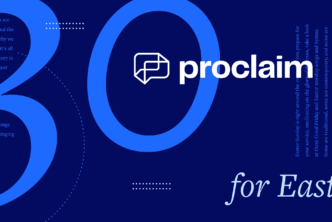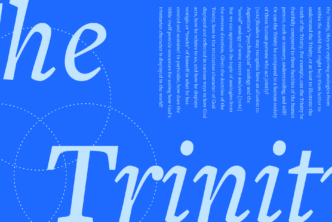The printing press is often credited with bringing Scripture out of the control of the clergy and into the hands of everyday Christians. It spread the ideas of Reformers such as Luther and quickened the advance of the gospel and gospel theology. Printed books brought immense value, including easy and inexpensive access to the Bible and theological works.
But some Christians of the era opposed this agent of change, worried it would lead to error and heresy. Many of their dire predictions came true, and yet the benefits were so great that, in hindsight, any opposition strikes modern Christians as ridiculous.
I believe the internet and online education will outshine even the printing press in expanding the gospel’s reach. We may scratch our heads at Reformation-era critics of the printing press, but future generations will wonder why anyone ever challenged the legitimacy of online education for pastoral training.
Technology, pastoral training, and tradeoffs
Consider this: prior to the printing press (and especially prior to universities) pastoral training was restricted to individual mentorship and small group training by whoever was available in the local church. Upcoming pastors might have had lots of opportunities to serve actively in the local church, but exposure to general thought and learning would have been severely limited. Even access to a full Bible was not universal.
With the advent of universities, great minds and libraries of great books were brought together to teach those going into church service. But those students had to be uprooted from their homes for the duration of their training, often losing relationships, mentors, and church homes. The positives outweighed the drawbacks, but there were drawbacks.
This still occurs today. Many seminaries promote their residential programs as the “best” way. Online education is perceived as second-rate, and its development is opposed by many in the church. (I once heard a pastor and professor say he would oppose the ordination of anyone receiving their MDiv from a primarily online seminary, regardless of the school it came from.)
Meanwhile, seminary cities are overpopulated with upcoming pastors with limited opportunities to serve, preach, and do real ministry work. (There’s only so many youth groups in any one place.) Churches lose their developing leaders when they are “sent” or just “go off” to seminary; the students lose the very church and mentoring relationships through which they felt God’s call in the first place; and newly minted graduates often need years of service to rub off the rough edges of too much study with too little human interaction.
All this, and at an increasingly heavy price tag; the Association of Theological Schools’ 2017 annual report shows that the median seminary in the United States spends $4.1 million for 90 full-time students. That’s over $45,000 per year per student. In all, ATS schools report $1.7 billion per year in annual spending on theological education, money that comes through church sponsorships, donations, student families and supporters, tuition payments, and increasingly, student debt. That’s just for education; the church’s total tab to support their moving and living expenses is much higher.
How technology helps
Online education makes it possible to completely change that model. Instead of churches sending their upcoming leaders (and their money) off to campuses across the United States, online education lets students stay with their home church, their existing mentor, and their established relationships. The “great minds” can go to the student instead of the student to the great minds. Not only that, but resources like Logos are used by seminaries like Knox to send out not only the great minds but also the great books and research tools. Students can experience both the close mentorship found in the early church and the rich education of the later church in one new pastoral training process. Online education keeps future ministers in their home church and gives them real ministry experience prior to graduation. Equipped with a Logos library, they start ministry with thousands of theological resources they can tuck into a backpack.
That alone is compelling, but frankly, the near certainty that this will be the future of church training becomes clear when the costs are considered. That $45,000 per year per student cost? Online education has let Knox reduce that figure to under $16,000 per year, including supplying every student with Logos software complete with a significant theological library. We anticipate costs could go as low as $6,000 per student while still maintaining the same level of training and interaction we currently offer. Looked at another way, the Church in America could save $1.4 billion of that $1.7 billion expense by embracing online education in the future.
For churches raising up pastors for ministry, how could it not be compelling to train nearly eight people for the cost of one today, or to keep upcoming leaders instead of sending them off to minister elsewhere? It’s not a question of if online education will be the dominant way the church trains pastors. It’s simply too good for upcoming pastors, individual churches, and the stewardship of the whole Church’s resources. The real questions are what exactly it will look like and who will be doing it. Churches and seminaries alike need to get onboard to embrace and shape the future of pastoral training. Churches and existing pastors will become more responsible for mentoring and teaching well, and seminaries—and seminary professors like me—will become less important and less common, (alas).
I cannot say exactly what this new model will look like. However, I am quite certain that the church in 2518 will be looking back at the internet and online teaching like we look at the printing press, and perhaps even using the word “ridiculous” of those who opposed it.
***
Tim Sansbury is Vice President at Knox Theological Seminary where he also teaches courses in philosophy and theology. He has spent his career in Christian education at all levels from K-12 to graduate schools as both a teacher/professor and administrator. He lives in South Florida with his wife Tesa and three teenage daughters, Anna, Emily, and Paige.





